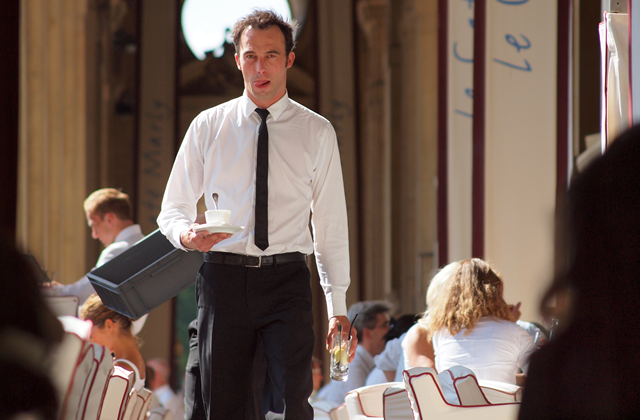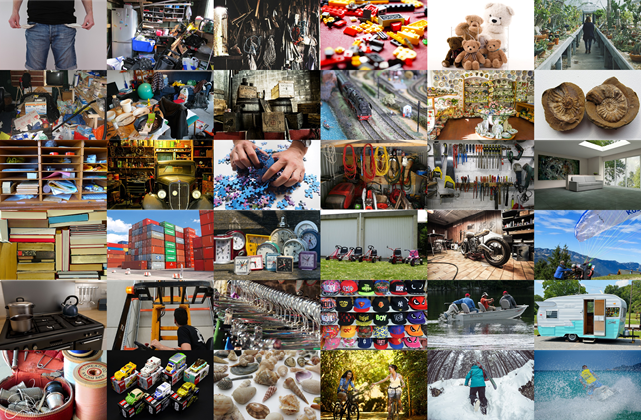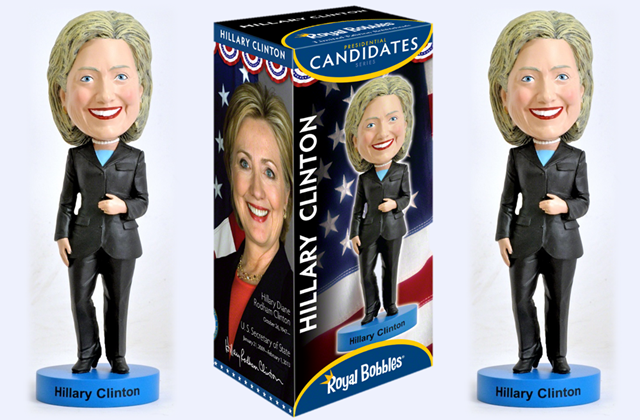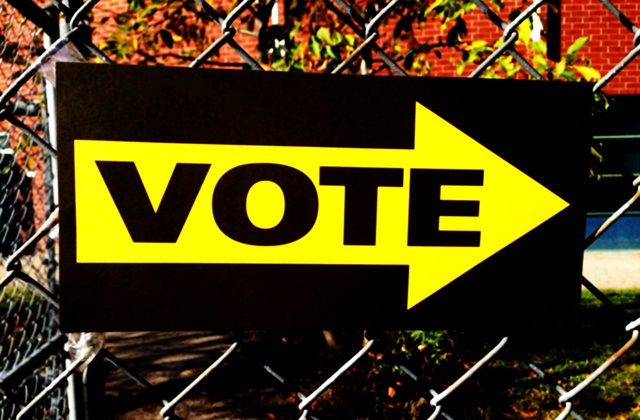A Table for Many
A recent report by Australia’s A Current Affair claimed that some so-called restaurants operating within the Menulog website, were providing takeaway meals which were not produced by restaurants under restaurant conditions. Rather, they were produced in homes, by unregistered and unlicensed businesses. Furthermore, where produced by restaurants, some were listing themselves as being multiple different restaurants.
Before examining this more, Menulog is part of the newer range of websites and apps seeking to connect the consumer digitally to the restaurants. A change of offering convenience and potential home deliveries of takeaway meals over the more traditional location-bound restaurant experience. Effectively creating a digital marketplace and promotional space for restaurants, restaurateurs, and potential customers.
Concerns raised with the A Current Affair report seem more sensational than substantial.
Since when did a home-cooked meal necessarily become a bad thing? Furthermore, consider that few if any of the various meals and products produced by, and sold in, cottage industries, food stalls, street food, and vending carts, are actually made in a restaurant. Or even the charity (or promotional event) barbeque and sausage sizzle is seldom taking place under the roof of a restaurant. Yet people will buy this food all the same.
Claims of restaurants operating under multiple names and delivering the same product is hardly new. Nor is it even necessarily illegitimate. Many big businesses and well established companies do this. It forms part of their product positioning and pricing structure, aimed at achieving a combination of maximising profits and capturing market share. It can also be seen as a way for companies through marketing to not dilute their brands or cannibalise their own products.
Bundle This with That
Why is it that someone is prepared to pay what may be as much as many thousands of times the price for water because it came from a bottle instead of a tap? Granted the bottle of water may be cold, convenient, filtered, and maybe even safer to drink subject to the circumstances. Yet it may also be none of these and cost significantly more than readily available tap water. (It may not even be all that different either.) Then factor in branding, and then more pricing and product positioning can occur. Hopefully, from the perspective of the company in the name of greater profits (or maybe market share). For which, the consumer is also offered greater choice.
A similar practice occurs with the sale of alcohol. For example, one brand of wine has a high pricing point and prominent branding via its bottle and label. Some people will equate the high price to quality and even prestige, and may enjoy the more expensive wine to a greater extent because of this. (Although for almost any piece of research, a countering piece of research can also be found. Here, a negative correlation was found between the enjoyment of the wine and its price; yet this was subject to an individual’s wine tasting experience. Oenophiles, are more likely to like wines other wine lovers like. Then price does seem to positively correlate with their enjoyment.)
Yet it may also be that the very same wine is sold far cheaper under a different brand and name in a cask instead of a bottle. Go direct to the vineyard itself, and it may be possible to again buy the same wine, albeit without any labelling or fancy packaging whatsoever for an even cheaper price. (Admittedly, notwithstanding other factors, it is reasonable that less packaging and no transportation costs or retailers’ profit margins should result in a less expensive product.) Hence same product, albeit with different expectations of it.
Or consider different pricing structures, such as used with electricity. Paying for peak versus off-peak power. The price may vary, but isn’t the power still the same?
Lest it be thought these examples are isolated to consumables, what about other more durable things, such as in the electronics industry. Or within the clothing and fashion industry. The garments may have been made in the same factory. One garment receives a tag or official label, and under a brand name sells for many times the price as another garment produced in the same factory but devoid of the logo. These need not be cheap knockoffs and imitation products, because yes, the quality between the real and the fake can differ. That fact is not denied.
However, the point is that the act of branding and marketing can and does affect the price of products which may be close substitutes and at times are essentially the same product minus the labels. This is the microeconomics of bundling, pricing and profit maximisation. Concepts and practices which extend across multiple industries. So if the food industry is also engaging in these, aided by technology, is it really that surprising?
That a restaurant is selling the same takeaway meals online under multiple brand names need not necessarily be a cause for concern. One question is, if consumers were presented unbeknownst to them with same takeaway meal, but all servings (of the same takeaway meal) were given under a different restaurant’s name, could people tell if the takeaway meals were the same or different?
How they’d feel about the apparent deception upon discovery, would be another matter.
As an aside, despite what someone may claim about their tasting ability, it’s equally interesting to see if served in the same unbranded cups whether they can tell the difference between Coke and Pepsi. (Perhaps not the most edge of your seat viewing experience, but see one and two of the many YouTube examples of those who could tell the difference.) It can be taken even further by giving someone two servings of a cola drink which is neither Coke nor Pepsi, and asking them to tell you which is Coke and which is Pepsi. There is no guarantee the person will know that neither are Coke or Pepsi and they may also claim that the drink in one cup tastes better than the other. (For a similar wine-related and price-related example of this, see this study.)
Venue Revenue
Which in a roundabout way, returns to the restaurant and takeaway meal issue. At a restaurant, why is someone prepared to pay more for the ‘same’ food as the takeaway? Whilst many factors are there, they could broadly be summed up as the setting, milieu and ambience of the restaurant compared to the convenience of the takeaway meal. Presentation plays a big role here. As does maybe the status of being able to dine at the restaurant itself.
Similarly, why is someone prepared to pay significantly more for an alcoholic beverage at a night club than if there were to have bought it from a liquor store. Again the answer is found in a combination of inelastic demand and the setting itself.
The environment of the venue is the key factor.
Now suppose the same restaurant delivers its (same) takeaway meals under different brand names. People are likely to consider the price and the convenience as important. (Besides, for takeaway food is anyone really expecting Michelin stars?) Yet we humans are also apparently fickle enough, that small things in presentation may make a very big difference. Maybe one of the ‘different’ restaurants delivers faster, or its delivery driver is friendlier, or the meal comes in nicer packaging or includes utensils and serviettes, relative to another ‘different’ restaurant.
Little things like these may make a big difference to the consumer and also influence their customer loyalty. Knowing this, is the restaurant really that bad for doing this and thereby attempting to maximise its profit?
Consumers of Information
Is that consumers should be more informed, that it is a case of information and expectations management? In which case, would it be sufficient to have a disclaimer the effect of:
Not all products are produced by restaurants.
Although, that may be too general. Semantics and wordplay could sneak in as people seek to make the word “products” as malleable as need may be. Perhaps then, the following would be better as a disclaimer:
Not all meals are produced by restaurants.
Beyond which, it could then be further disclosed if it was a “home-cooked” meal, or something else, such as where one restaurant has multiple listings as though ‘different’ restaurants. (Note that some restaurants do disclose their multiple listings on the Menulog website.)
This would be a positive step towards making consumers more informed. It does, however, only address the supply side. Reliant upon the honestly of those making and selling the meals. Deceptive practices are ultimately likely to be bad in the long-run for business. The selling of faulty or inferior products (including takeaway meals which taste terrible or result in sickness because of improper food preparation) is not likely to be a good thing for either the business or its customers.
Additionally, on the demand side, Menulog does give consumers the ability to rate and review the restaurants they have ordered from. Is this enough, putting it more directly in the hands of the end consumer?
Or, would people feel safer knowing that the conditions their meals were produced under were subject to a code of practice with licensing requirements, inspections, and standards by Government health officials?
Laissez-(un)faire?
Is one restaurant having so-called “fake” restaurants’ names which it also sells food under innocent branding or is it deceitful practice?
Is this just another example of the changing face of the digital and the information age? The old guard decrying for their licences and bureaucracy to protect them, even as newer things find ways to innovate around them and their red tape?
Although not food related, other prominent examples are:
Uber,which allows people to use their own cars and become paid drivers, thereby replacing traditional taxis (and hire cars as well as public transport).
The company has met with both fanfare and significant protest.
Yet in an age of GPS and electronic satellite navigation systems, are things such as taxi licences (effectively Government-granted monopolies) really necessary? (One man in particular seemed to think so.)
A taxi driver’s knowledge of the local roads and traffic conditions could be an undeniable advantage, yet a large part of this may well be tacit knowledge. Something learnt on the job driving (with GPS device as a backup). As opposed to specific testing for licensing (see the Knowledge for an example in London, which is extremely thorough).
Beyond the protests (which are still recent and ongoing), other moves have been made to stop Uber. Such as deeming payments to Uber’s drivers illegal; a way to skirt around this has been that passengers instead ride for free and then make “donations” to the drivers.
All perhaps rather silly. Unless it is your livelihood at stake.
If the Uber driver has a registered and roadworthy vehicle and a current driver’s licence – and is therefore legally allowed to be driving on the road anyway – if the customer happily and safely gets from A to B, is this not enough?
Concerns have been raised about the (potentially officially unknown) identities of the Uber drivers, and that they may commit crimes or not act in the best interests of their passengers. Such incidences seem relatively isolated; as are similar incidences related to licensed taxi drivers. It is also questionable even with official licensing, just how frequently the average person scrutinises and questions the identity, and motivations, of the average taxi driver. (And do we then mistakenly believe that the terrible actions of one taxi driver should somehow tarnish the character of all other cabbies and that the taxi company should be held responsible?)
Furthermore, in the sense of the customers providing the elements of self-regulation, Uber have also introduced a panic button in their app to help address safety concerns. Whether this works as well as intended, remains to be seen.
Another company is Airbnb, which effectively allows people to rent out their spare rooms (and apartments, houses, etc.) as accommodation to others.
To the consumer this may provide a greater range of potential places to stay. To the rentier, it is a means of capitalising on an asset and providing otherwise absent cash flow. Beyond which, it may also open up other avenues such as friendships and reciprocal accommodation arrangements. Wherein it has been argued this is part of the newer so-called “sharing economy”.
However, there are often taxation and regulation considerations at play. (Regarding Uber, it’s safe to assume that many of the car insurance companies would also like to know if a vehicle is being used for work or hire car purposes.)
Another argument against this “sharing” of residences, is that it has created a rotation of strangers moving in and out of buildings and houses. Altering the sense of both community and safety for the nearby, and more permanent, residents. Views of which may span from being cautious towards xenophobia.
Judging the suitability of someone, or someplace, within this system is largely self-regulated via ratings and reviews.
Similar to Uber and taxi drivers, Airbnb and hoteliers are at odds at times. Many hotel operators are claiming that Airbnb is effectively enabling the operating of illegal hotels; and much like the cabbies, they along with others are also protesting as such. It begs the question though: In whose best interests are people acting here?
Now for the Takeaway
From Airbnb to Uber, to Menulog and many others unmentioned, haven’t we been here before? A cycle of disruption then regulation repeated over and over again. What are your thoughts on all this, whether as a user of these services or as someone whose livelihood is potentially disrupted by them? How should things be regulated and who should responsible and accountable for this? Have your say in the comments section, and also answer the related question to this article below.
Feature Image Credit: Zoetnet
 uthinki Considered Opinion?
uthinki Considered Opinion?



